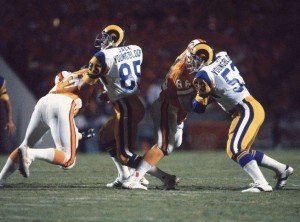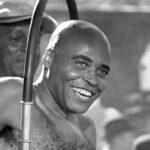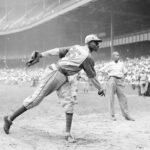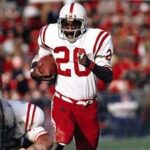Four Athletes Who Played Through Serious Ankle/Leg Injuries
A serious leg injury, particularly one in a key joint like the ankle or knee, reduces mobility to almost zero and brings an intense wave of pain. To study some of the technical details, check out https://www.vivehealth.com/blo
Shun Fujimoto, 1976 Montreal Olympics
Fujimoto was a 26-year-old Japanese gymnast when he competed with the national team at the XXI Olympiad. These were the first games played under the International Olympic Committee’s new rules that limited the number of participants. The clear intent was to level the playing field for smaller nations by keeping some prominent gymnasts from countries like the Soviet Union on the sidelines. Nevertheless, the USSR was still favored to win gold in the men’s team competition.
After taking a nasty spill during his floor exercise, Fujimoto fractured his knee. Nevertheless, he competed in both the pommel horse and the rings, earning marks of 9.6 and 9.7. At the end of his rings routine, his dismount aggravated his injury and doctors said that he risked permanent disability if he did not withdraw. Japan won the team gold over the Soviet Union by 0.4 points.
At the time, Fujimoto said that he stayed in so he would not let his team down. Some time later, when someone asked him if he would do it again, Fujimoto flatly replied “No.”
Jack Youngblood, 1979 NFL Playoffs
Coming off a year in which he had a career-high eighteen sacks for the Los Angeles Rams, Youngblood broke his leg in the second quarter of the Rams’ first playoff game against the Dallas Cowboys. But he stayed in the lineup for the team’s entire playoff run that went all the way to Super Bowl XIV. Later in that playoff game, Youngblood came up with a critical sack of quarterback Roger Staubach in the game’s waning moments, with the Rams desperately clinging to a 21-19 lead.
Youngblood was in the starting lineup for the Rams’ 31-19 loss to the Pittsburgh Steelers. He even played in the meaningless Pro Bowl on that same broken leg, but that might have been because the 1980 version was the first Pro Bowl to be played in Hawaii.
Keri Strug, 1996 Atlanta Olympics
Strug was on the U.S. women’s gymnastics team which some people dubbed the Magnificent Seven. During her first vault in the final rotation, strug misjudged her landing and hurt her ankle; doctors later diagnosed the injury as a very serious third-degree lateral sprain. She had to do one more vault for the U.S. team to win gold over the Soviet Union. Reportedly, she asked coach Bella Károlyi “Do we need this?” and he answered “Kerri, we need you to go one more time. We need you one more time for the gold. You can do it, you better do it.” She completed the vault, landed on her good foot, and scored a 9.7.
After retiring from gymnastics, Strug earned a master’s degree from Stanford University, taught school for a number of years, and served under President George W. Bush in several appointed positions.
Tiger Woods, 2008 U.S. Open
Arguably the greatest golfer of his or any other generation was in the midst of a historic winning streak when he underwent knee surgery in April 2008. It was his third such procedure on that joint. Doctors prescribed four to six west of rest following the surgery, which ended just before the U.S. Open teed off in La Jolla, California. On a still-injured leg, Woods shot a first-round 72, barely making the cut. But he played much better as the weekend progressed, eventually forcing a playoff with Rocco Mediate after a memorable putt on the final hole of regulation play. Woods won on the nineteenth hole.
With the win, Woods joined Jack Nicklaus as the only two golfers who have won the Grand Slam three times. Alas, Woods underwent further surgery on the knee and he has yet to win another major title.
A very strong honorable mention goes to Boston Red Socks pitcher Curt Schilling in the infamous “bloody sock” game of the 2004 American League Championship Series. Immediately prior to his start, doctors performed an emergency stopgap procedure on his ailing ankle in which they sutured a tendon to some other tissue. Schilling then gave up one earned run over seven full innings in a victory against the hated New York Yankees.















